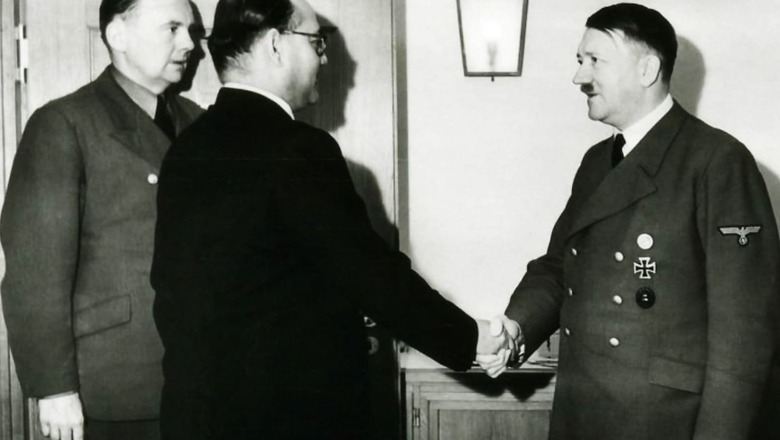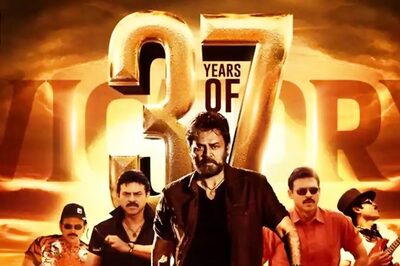
views
What’s common to Audrey Truschke and Gaetano Donizetti’s opera Lucia Di Lammermoor? Turns out, literally everything. Lucia is at best a D-grade opera, a dreadful insufferable bore, that became famous through sheer luck. (Gioachino) Rossini and (Vincenzo) Bellini had retired and Italian opera in desperate search for a new hero propped up Donizetti. Donizetti couldn’t compose anything even remotely musical and so filled Lucia with staid tropes which singers could embellish to “show off their skills”. The subject matter is also curious — an emotionally unstable, mentally fragile damsel driven to stark, raving madness and murder because her single point fixation — a chap called Edgardo — remains out of her reach while being emotionally manipulated by her brother Enrico. Here, it’s important we understand the three elements of Lucia — the technically substandard nature of the opera, the phenomenon of its undeserved celebrity stature, and finally the madness of Lucia herself.
Perhaps the best explanation of Ms Truschke’s academic banality has three aspects to it. First is severe confusion and self-contradiction — something amply evident in her writings about Aurangzeb and Bakhtiyar Khilji. While Audrey makes a passionate case to not judge Aurangzeb by 21st century standards but rather by those of the 17th century, even by those very standards, Aurangzeb comes off as a cruel, murderous bigot — be it in India or across the globe.
It is worth noting that India too by this time had been moving to its own form of embryonic/proto-secularism that Europe had in the wake of the Treaty of Westphalia and the devastating 30 Years’ War. Akbar, Aurangzeb’s great grandfather (crowned less than 100 years earlier in 1556), for example was probably the first and only Muslim emperor to commit the cardinal crime of apostasy, converting from Islam to his Din-E-Ilahi for the greater good of his people. That was at a time when Elizabeth I of England was executing Catholics in droves in England and Philip II was burning alive scores of “heretics” in Spain. By Aurangzeb’s time, Europe had reached its own modus vivendi, further solidified by Cardinals Richelieu and Mazarin. Aurangzeb’s own reign can be contrasted with the entirely bigotry free reign of Shivaji who was just as much a man of his times. One can only assume that Ms Truschke’s tunnel vision made her lose context of what was happening around Aurangzeb.
The second is that Audrey Truschke doesn’t actually marshal any new facts — just giving us the patina of new commentary on already known facts. The one exception to this rule is her paper on the destruction of Nalanda University, but that in itself succumbs to her third flaw — her treatment of evidence. That third problem as demonstrated by Girish Shahane, an art critic and a Rhodes scholar, is that her references are tendentious and fragile at best, largely assuming that the absence of evidence (in a polity where historical archives are notoriously difficult to come by) is evidence of the absence of bigotry.
This brings us to the second part of Lucia Di Lammermoor — its “fame”. Fame is a complex phenomenon that has little to do with perspicacity, rigour or brilliance. For example, historically (Antonio) Salieri was an infinitely more famous and successful composer in 18th century Vienna, while his contemporary (Wolfgang Amadeus) Mozart was an infinitely better one. In this, Audrey fits at the happy confluence of two trends in Indian historical writing. The first is growing irrelevance of the Irfan Habib school of Islamic Historical Atrocity normalisation, where the aged professor’s own protégé-isation of mediocrities to further his narratives meant that there was no flag bearer of any worth left. The second was India’s ongoing inferiority complex of looking at our history through the lenses and interpretations of the white man (and woman). In this, Audrey has become the white saviour and gonfaloniera of the Irfan Habib school. Her Kabuki theatre-style overdramatisation of social media trolling has added the much-needed megaphone of publicity to the narrative and ethnicity vacuum she fills. Undeniably, while she may be the Salieri of historical writing, she definitely is the Bach-Mozart-and-Beethoven of playing the victim card.
Finally, we come to the stark similarities to the character of Lucia herself. This week in the midst of the Bose statue controversy, she tweeted something quite astonishing. She juxtaposed a picture of Bose shaking hands with Hitler and Narendra Modi garlanding a statue of Subhas Bose. Cleverly she didn’t actually say anything, but the implication was clear — guilt by association. This is particularly curious because the Nazis were the ones who re-criminalised guilt by association through the Sippenhaft Laws, inadvertently showing Ms Truschke to be more closely attached to the core tenets of Nazism than Bose ever was. This is hardly surprising because her own history of atrocity denial and normalisation neatly dovetails into patterns of Neo-Nazi Holocaust denial, while her Twitter tactics of baiting and hyperbolisation would do the Goebbels school of propaganda quite proud.
Pic 1: 1942, Subhas Chandra Bose meeting with Hitler.Pic 2: 2022, Narendra Modi honoring a statue of Bose. pic.twitter.com/aeVyoRyHpQ— Dr. Audrey Truschke (@AudreyTruschke) January 29, 2022
The problem is it raises significant questions about her academic credentials — specifically if she understands context and causation. After all Nehru’s active championing of two more prolific mass murders other than Hitler — namely Stalin and Mao — doesn’t make anyone garlanding a statue of Nehru complicit in either the Gulags or the Cultural Revolution. Lionising Churchill similarly doesn’t make one complicit in the partially man-made Bengal Famine or the bombing of Dresden. Nor does Hunter Biden’s board membership of the Truman National Security Project make his father — Joe Biden — complicit in the atomic bombings of Hiroshima and Nagasaki. However, such facile comparisons do raise serious questions not just about Ms Trushchke’s academic training and methodology but also about the calibre of Rutgers University’s academic standards and duty of care to its students — to protect them from erratic faculty.
In the end what we can be sure about is that much like the opera Lucia Di Lammermoor, Ms Truschke’s work is entirely unremarkable; a deeply confused, self-contradictory and banal mediocrity who has acquired fame due to fortuitous and entirely extraneous circumstances. The question is, if her increasingly erratic and bizarre behaviour on Twitter is a sign that she’s mirroring the complex psychological journey of the protagonist of this tragic opera.
The writer is a senior fellow at the Institute of Peace and Conflict Studies. The views expressed in this article are those of the author and do not represent the stand of this publication.
Read all the Latest Opinions here



















Comments
0 comment